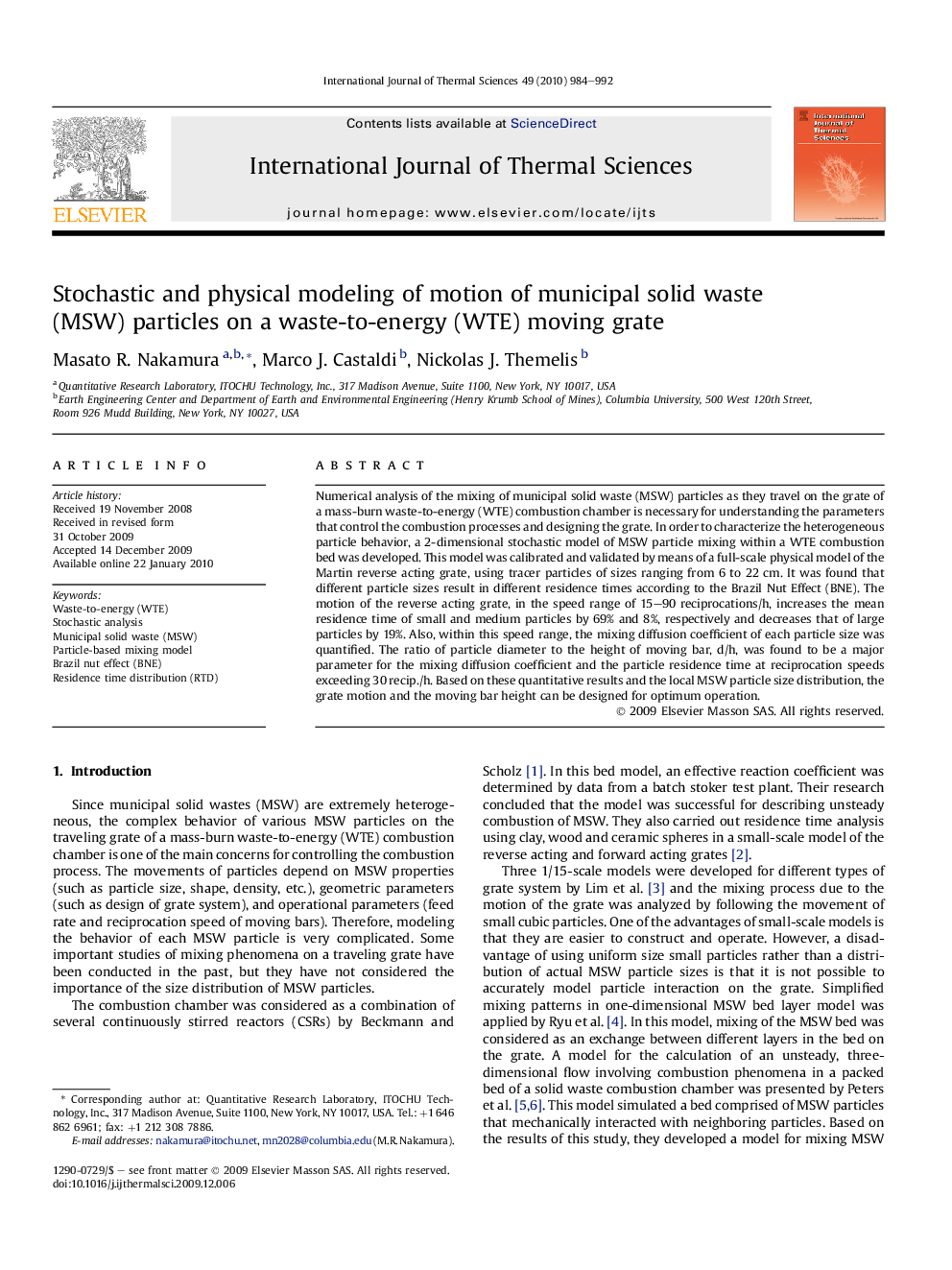| کد مقاله | کد نشریه | سال انتشار | مقاله انگلیسی | نسخه تمام متن |
|---|---|---|---|---|
| 669122 | 1458790 | 2010 | 9 صفحه PDF | دانلود رایگان |

Numerical analysis of the mixing of municipal solid waste (MSW) particles as they travel on the grate of a mass-burn waste-to-energy (WTE) combustion chamber is necessary for understanding the parameters that control the combustion processes and designing the grate. In order to characterize the heterogeneous particle behavior, a 2-dimensional stochastic model of MSW particle mixing within a WTE combustion bed was developed. This model was calibrated and validated by means of a full-scale physical model of the Martin reverse acting grate, using tracer particles of sizes ranging from 6 to 22 cm. It was found that different particle sizes result in different residence times according to the Brazil Nut Effect (BNE). The motion of the reverse acting grate, in the speed range of 15–90 reciprocations/h, increases the mean residence time of small and medium particles by 69% and 8%, respectively and decreases that of large particles by 19%. Also, within this speed range, the mixing diffusion coefficient of each particle size was quantified. The ratio of particle diameter to the height of moving bar, d/h, was found to be a major parameter for the mixing diffusion coefficient and the particle residence time at reciprocation speeds exceeding 30 recip./h. Based on these quantitative results and the local MSW particle size distribution, the grate motion and the moving bar height can be designed for optimum operation.
Journal: International Journal of Thermal Sciences - Volume 49, Issue 6, June 2010, Pages 984–992